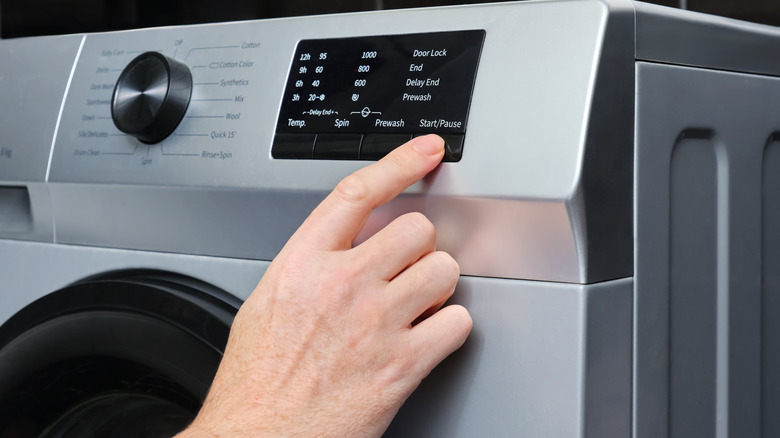The Budget-Friendly Washing Machine Setting You Probably Aren't Using
We may receive a commission on purchases made from links.
Did you know that the eco setting on your washing machine can help you wash clothes more economically? If you're not using this setting, you may be missing out on valuable energy savings. The eco cycle, also known on some washers as economy wash or energy-saver, helps lower your appliance's energy consumption by washing at a lower temperature. The result is you get clean clothes at a lower cost compared to running a traditional cycle, cutting your washer's energy use by more than half.
Depending on the model and age, a standard cycle in your washing machine can range from 400 watts per hour to 1,500 watts per hour. However, most of that energy is used to heat water during hot or warm cycles. According to Energystar.gov, washers use 90% of their energy during a cycle toward heating the water. While you can switch to a high-efficiency (HE) rated machine to save on energy costs in your home, choosing the eco setting can reduce consumption even more. Because economy mode uses cooler water, it typically runs a longer cycle than other settings. It works similarly to your dishwasher's eco mode, offering comparable energy savings. The longer cycle compensates for the reduced water temperature, and also spins slower, further reducing energy use.
Best practices for using the budget-friendly setting eco-mode on your washer
Every washing machine setting serves a purpose, even economy mode. While the eco-mode can offer savings in your energy costs, it's not always the best choice for some laundry. It's most suitable for everyday laundry, such as lightly-worn clothing and pieces you'd like to freshen up after a normal day or two of activity. For the best performance, use detergent specially formulated to work in cold water, such as Biokleen Natural Cold Water Detergent, this way the detergent dissolves completely.
Avoid using it for heavily-soiled clothing to ensure stain are fully removed. Pay attention to laundry codes on care labels so you know the right way to clean your clothing, as some fabrics may require the delicate setting instead of eco for the best care. During cold and flu season, sanitization is crucial, so skip the eco mode if anyone in your family is sick because the cold water may not be enough to kill germs.
Though the exact time varies by your washer model, it may take up to three hours for the eco setting compared to the 40 to 50 minutes of a normal cycle. Because eco mode takes longer, it's not ideal when you need laundry done quickly – like when your kid needs that striped shirt for class picture day, or you're working through a large pile after a weekend off. For most other loads, though, choosing eco mode helps cut both energy costs and overall consumption.

